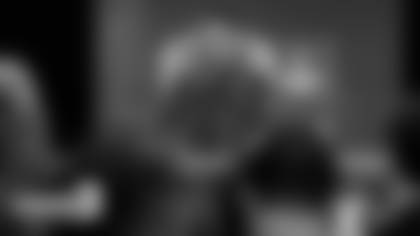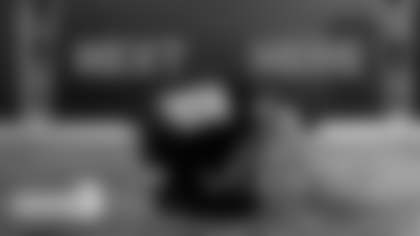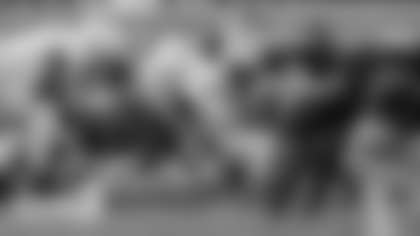JOHN SCHMEELK: The Giants' recent losses have all been so similar that I really don't know where to start to avoid being repetitive. Everyone is well aware of the red zone problems, the lack of a consistent running game, lack of a pass rush, turnover ratio issues, and the offensive line woes. So I'm going to go in a different direction. I think Saquon Barkley is getting too many targets. Huh? Yeah, that's right. Let me explain.
Barkley is one of the most talented players with the football in his hands I have ever seen. The more you get it to him, the better, but with all the Giants' weapons on offense, he should not be on pace for 116 catches and 142 targets, which would be a record for a running back. He is averaging an impressive (for a running back) 8.6 yards per catch. I think the Giants' offense would be better off shifting some of those targets to Sterling Shepard and especially Evan Engram.
Shepard has 12 fewer targets than Barkley and 18 fewer catches, but he still has 45 more receiving yards. Only 17 of Barkley's 58 catches have resulted in first downs, while 28 of Shepard's 40 have resulted in conversions. On third down specifically, Shepard has eight third-down conversions on 10 catches from 15 targets. Barkley, meanwhile, has only four third-down conversions on 16 catches from 19 targets. Shepard's catches have been far more productive in keeping the offense on the field. Engram's numbers are obviously down because of his injury, so his small sample size isn't worth examining (17 catches on 26 targets for 145 yards and five first downs). But as he gets healthier, he needs to become a bigger target in the passing game. His size and speed should allow him to get down the seam and bust some of the single-high zone coverages the Giants have seen.
Defensive scheme, coverage and other circumstances like protection issues might be preventing a different distribution to other players. As the coaches take a look at the offense's tendencies during the bye week, this distribution should be in their crosshairs.
DAN SALOMONE: Sense of urgency is often talked about in this league, but the Giants showed no rush on Sunday. They didn't rush the ball, they didn't rush the passer, and they didn't rush to put points on the scoreboard. Washington did all of those things. In a game where the Giants never trailed by more than a touchdown until the fourth quarter, they ran the ball just 14 times compared to 47 passes. They gave up seven sacks but had none of their own. They gave up a first-quarter touchdown but didn't find the end zone until 17 seconds left in the game. "You don't want to be shooting three-pointers at the buzzer," coach Pat Shurmur said the day after game.
These are all problems that I listed, so what about the solutions? If I could answer that, you know the coaches could have answered that, and changes would have been made a month – or two – ago. There is definitely no single problem, and there is no single solution. "It all comes back to, when we run the ball down there, the runs got to go forward, not backward," Shurmur added. "We've got to be better in the run game there, and when we choose to throw it, we've got to get more out of those throws, whether it's a third down throw that needs to go to the end zone, or a first or second down throw that may just move the chains, or also get in the end zone. We've got to get more out of it, and so that's part of what we'll look at [over the bye week]."
LANCE MEDOW: Throughout the season, the Giants have been plagued by several issues, including a lack of efficiency on third down, in the red zone, and in pass protection. Unfortunately, all three reared their ugly heads in Week 8 against the Redskins. The Giants were 2-for-14 on third down, including 1-for-10 in the second half. A big reason for the struggles was down and distance. Of their 14 third downs, more than half (eight) were for 10 yards or more, including five for 15 yards or more, and they managed to convert just two of them. Two of those downs also resulted in a sack and an interception. When you play that far behind the chains, you make things very comfortable for the opposing defense and you also limit your flexibility in play calling. In the last four games combined, the Giants are just 11-for-47 on third down (23 percent), and of those 47 downs, 27 were for seven yards or more.
So the next big question is why are the Giants consistently facing third and longs, specifically against the Redskins. Well, allowing seven sacks is one contributing factor. To put things in perspective, the Giants had 12 possessions against Washington and the Redskins recorded one sack on seven of those possessions, so that means the Giants had at least one negative play on more than half of their possessions. On top of that, the Giants collected a season-high 11 penalties with four coming on offense, three false starts and one delay of game. When you combine the sacks with the penalties, that means the Giants went backwards at least 11 times. For a team that is averaging just under 19 points per contest, the margin for error is nonexistent. Every play, every possession is extremely valuable. The Giants don't have the luxury to sacrifice X-number of plays as a result of mishaps, especially when they were just 1-for-4 in the red zone with an interception.















